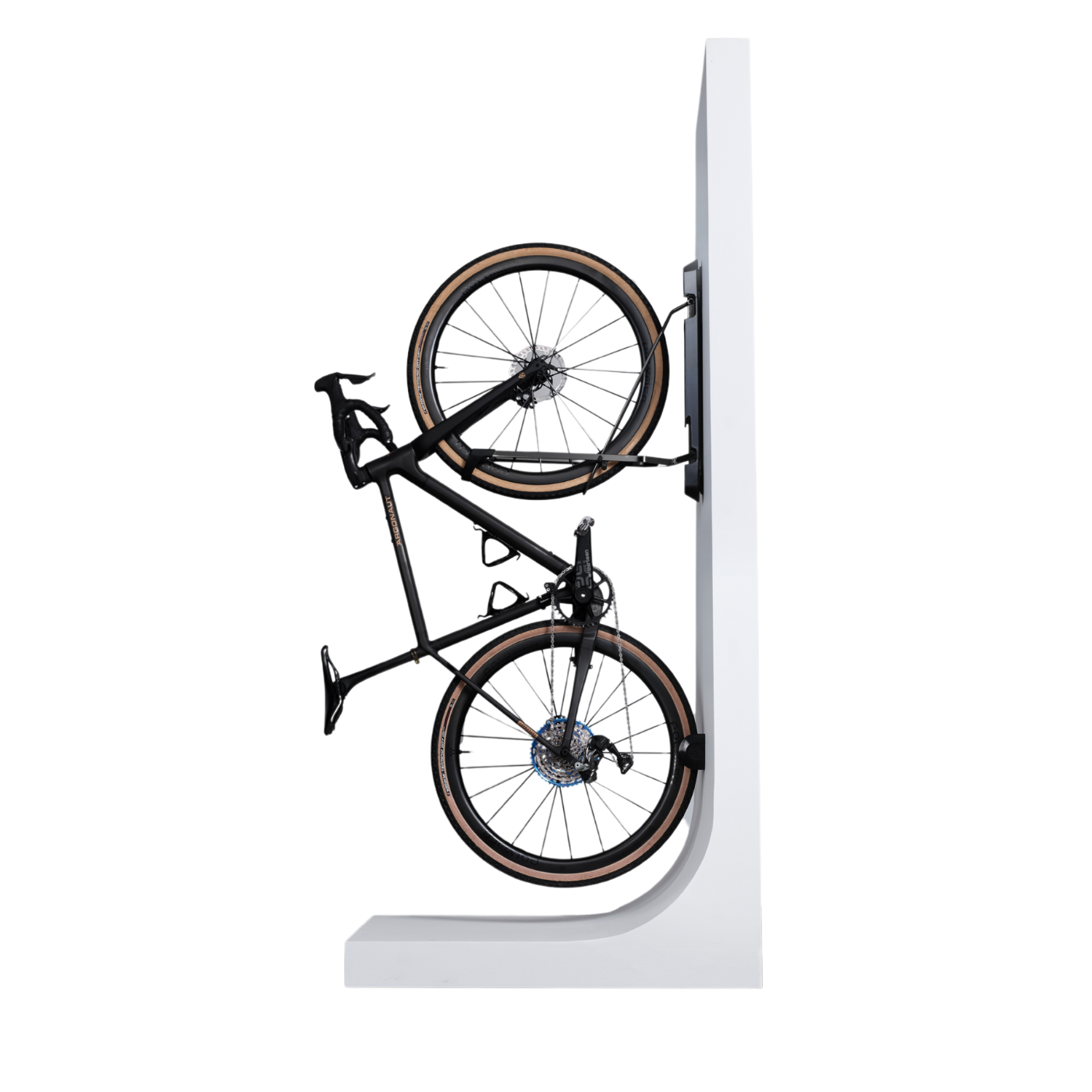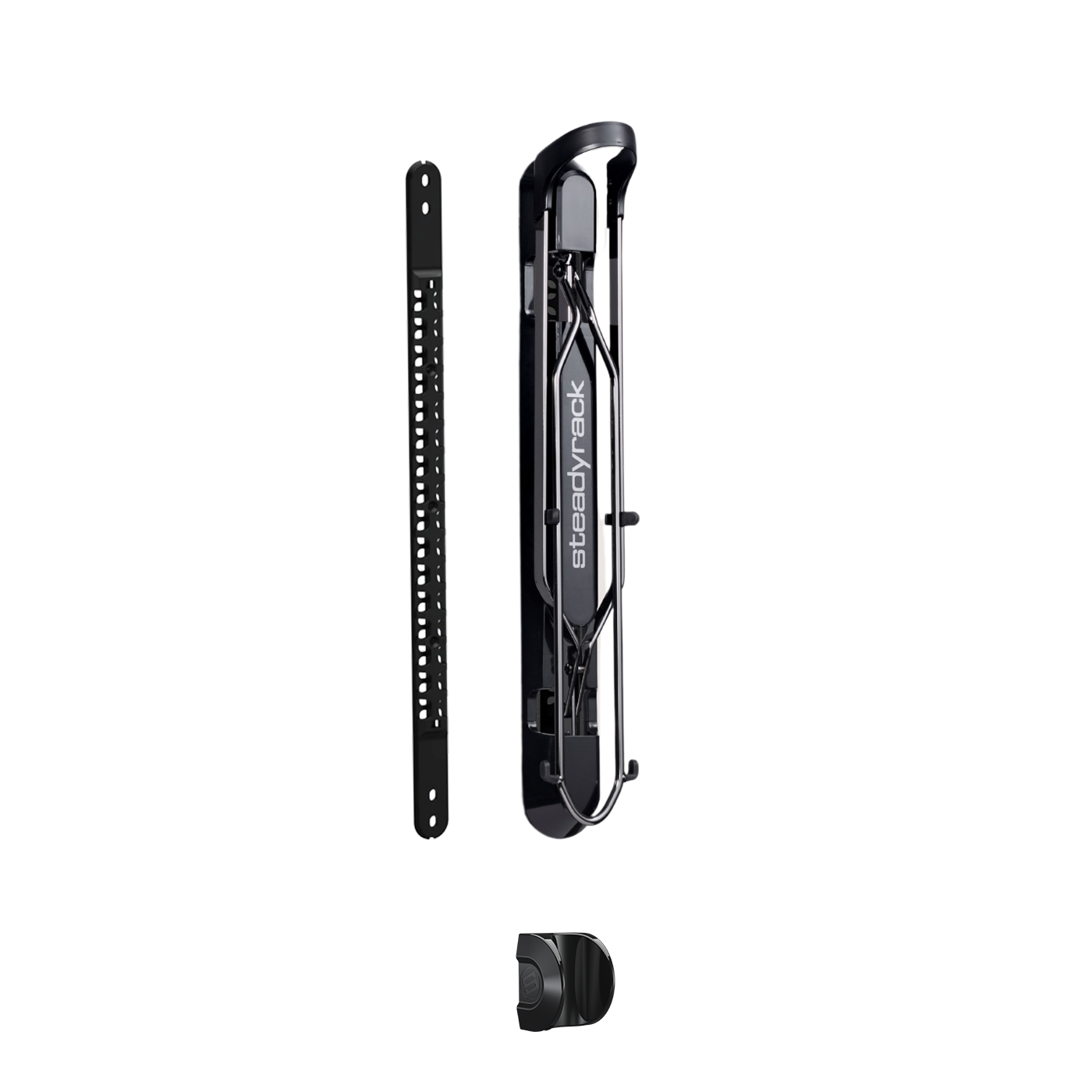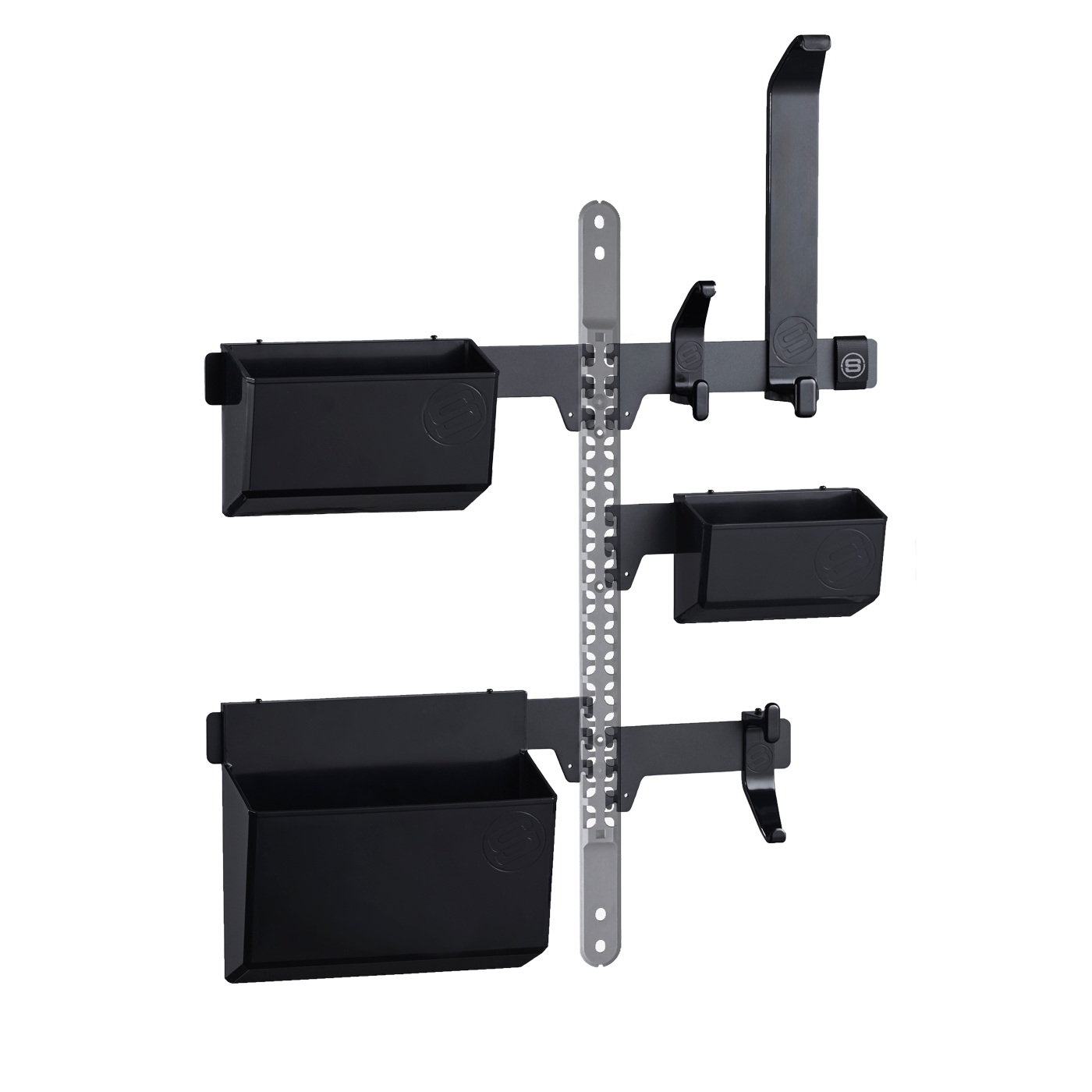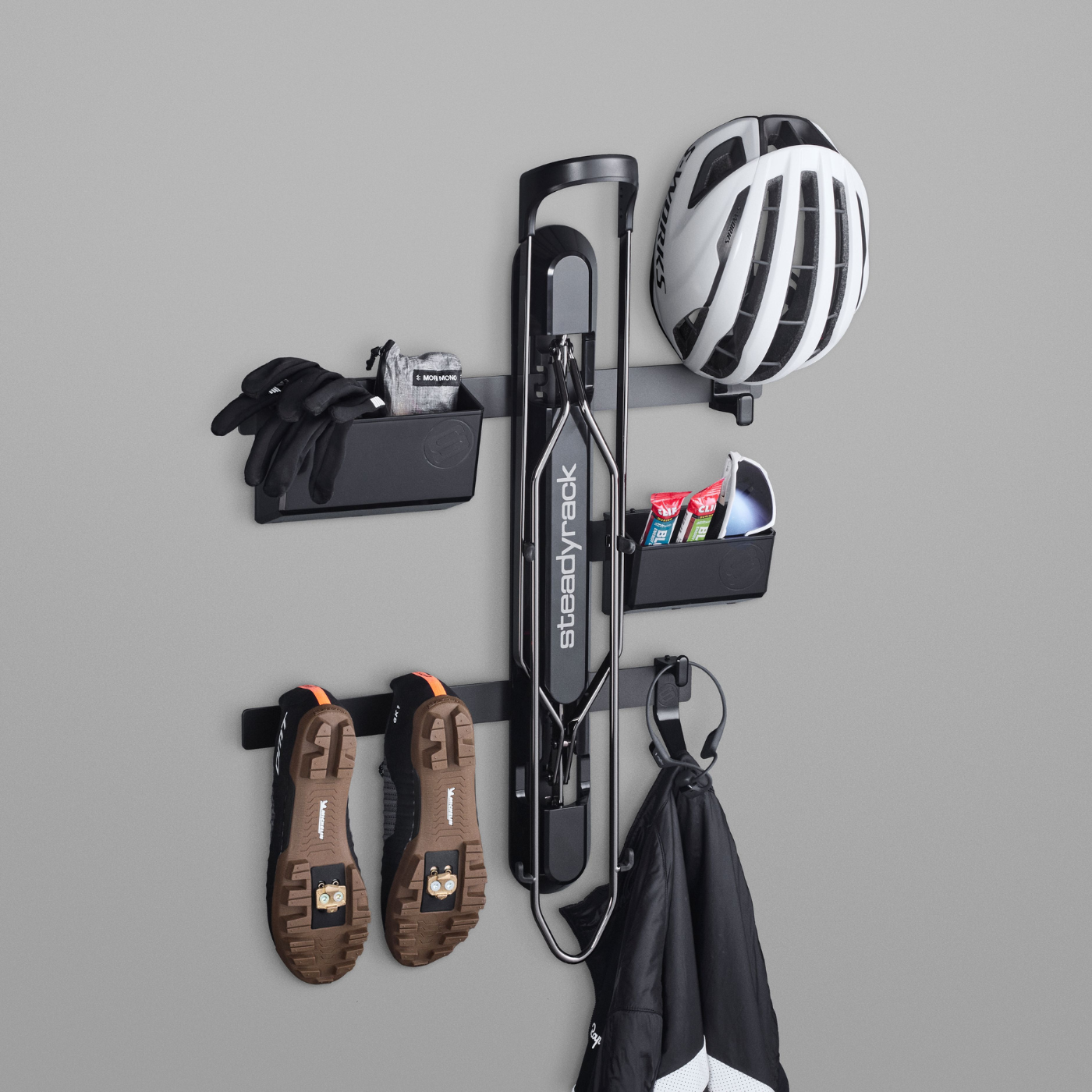Ergonomic benefits of a Steadyrack
Ever woken up in the morning with a stiff neck or a sore shoulder? Twinged your back while lifting something off the floor? We’ve all been there, it’s frustrating and the last thing you need when you’re looking forward to getting out on your bike on the weekend or facing the cycle commute to work.
While we can’t help you with your sleeping position, we can help with the heavy lifting – of your bike at least. As Steadyrack is designed to be the ultimate no lift storage solution, you can be confident that storing your bike won’t be a pain in the backside – literally.
Don’t just take our word for it though, we sought the expertise of a Physio for their thoughts on the impact a Steadyrack can have on spinal loading. After conducting a scoping research review the team at Applecross Physiotherapy concluded that “Steadyrack devices can minimise loading stress on the spine”.

Upgrade your bike storage now and your back will thank you later. Read the full report below:
Research review: Spinal loading, lifting injury + Steadyrack
Steadyrack storage devices allow the bicycle to be stored vertically in conjunction with avoidance of lifting the bicycle from the ground to reach a final storage position. The process of storage allows the bicycle to be rolled upwards from the rear wheel using leverage from the rear brake and the mechanical motion of the front wheel to load the bicycle into position.
The team at Applecross Physiotherapy and Perth Bike Fit conducted a brief review of literature surrounding lifting, injury risk and low back pain and whether Steadyrack’s ergonomic design could contribute to lowering the risk of sustaining a spinal lifting injury.
A ‘scoping research review’ aims to map the literature (types and sources of research) on a particular topic and shed light on key concepts. A 2017 scoping review targeted the effects of lifting height on low back loading, concluding that lifting from the floor could produce up to twice the amount of spinal loading as lifting from a more desirable location such as elbow height (1). The above scoping review supports a conclusion that lifting from the floor may increase spinal loading and considered a form of hazard identification when discussing factors that could influence a spinal lifting injury.
In the process of bicycle storage, depending on the storage device or method used, the bicycle may be required to be lifted from the ground or from a low-lying height to reach a final storage position. If lifting height is reported to be a contributor to spinal loading, could this be a relevant factor that contributes towards a low back lifting injury?
Low back pain can be conceptualized as an imbalance between our human body’s capacity to load and the physical load being moved (3). Our capacity to load is multifactorial and can arise from an interacting number of factors that include physical, biopsychosocial, lifestyle and genetic factors (3). These factors vary and interact differently between individuals. Spinal loading can be considered within this interaction (2).
Findings from a 2008 study reported that for load masses between 7.5 and 15kg and for lifting heights between 32cm and 155cm, that consideration of the vertical location of those loads was integral in gaining an ergonomic benefit prior to lifting (2). This study confirmed lifting height and load mass as influencing factors on low back load during lifting.
Based upon the above research findings combined with Steadyrack’s ergonomic and vertical storage design, we believe Steadyrack devices can minimize loading stress on the spine. This may be particularly evident when compared to lifting a bicycle from the ground or low-lying height. Correct installation and storage technique as recommended by Steadyrack is fundamental in minimizing this stress.
Due to Steadyrack influencing spinal stress, it could also be influential in reducing an individual’s overall chance of developing a low back injury whilst moving a bicycle. It is important to recognise that the relevance of spinal loading in the development of low back injury / pain will be individually specific and influenced by a multitude of factors (3). Comparison cannot be drawn across all lifting scenarios and individuals due to these differences.
Steadyrack remains our storage device of choice based upon it’s ergonomic features including vertical design. For further info on specific models click here.
- Adrian Spinelli (B.Sc Physiotherapy)
- Applecross Physiotherapy, Perth Bike Fit
References:
1. Ngo, Binh, Amin, Yazdani, Nicolette, Carlan, Richard, Wells. “Lifting Height as the Dominant Risk Factor for Low Back-Pain and Loading During Manual Materials Handling: A Scoping Review.” IISE Transactions On Occupational Ergonomics and Human Factors vol 5 (2017) – Issue 3-4
2. Hoozemans, Marco, Idsart Kingma, Wiebe, de Vries, Jaap, van Dieen. “Effect of lifting height and load mass on low back loading.” Ergonomics vol 51 (2008): 1053-1063
3. O’Sullivan, Peter, Joao, Caneiro, Mary, O’Keeffe, Kieran O’Sullivan. “Unraveling the Complexity of Low Back Pain.” Journal of Orthopaedic & Sports Physical Therapy vol 46 (2016): 932-937








